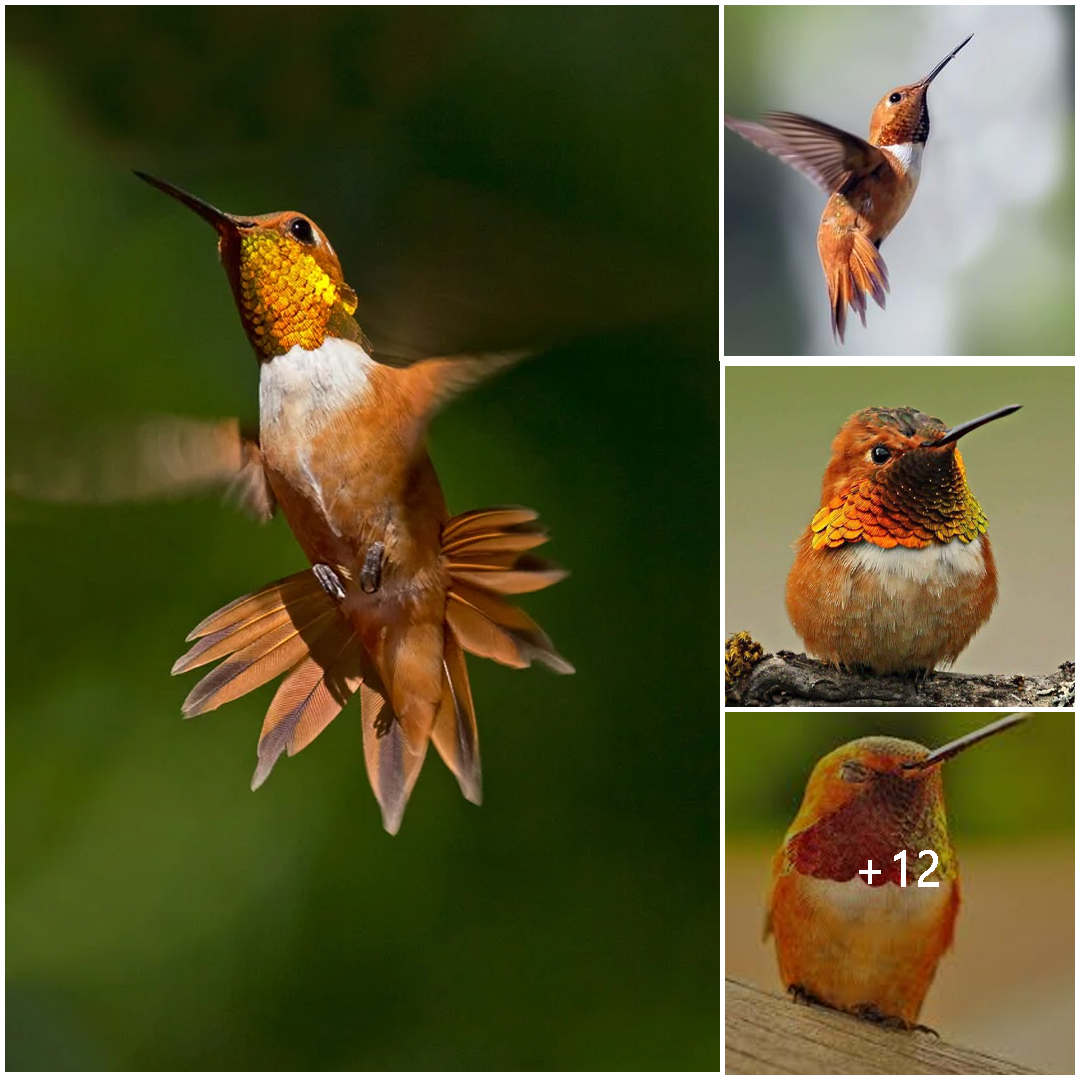
The Rufous Hummingbird: Nature’s Tiny Jewel
In the world of birds, few species captivate the imagination quite like the Rufous Hummingbird (Selasphorus rufus). With its dazzling plumage, remarkable agility, and migratory feats, this diminutive avian marvel has earned its place as one of nature’s most enchanting creatures. Let’s take a closer look at the Rufous Hummingbird, exploring its distinctive characteristics, migratory habits, and ecological significance.
Distinctive Characteristics: The Rufous Hummingbird is renowned for its striking appearance, featuring vibrant orange-red plumage on its back, sides, and throat, contrasted by a white breast and greenish-gold iridescence on its head. This distinctive coloration, especially prevalent in males, makes the Rufous Hummingbird a standout among its hummingbird relatives and a joy to behold for birdwatchers and nature enthusiasts alike.
Remarkable Agility and Flight: Equipped with rapid wingbeats and exceptional maneuverability, the Rufous Hummingbird is a master of the air, capable of hovering, darting, and diving with remarkable precision. Its long, slender bill and specialized tongue enable it to extract nectar from flowers with ease, making it a vital pollinator for many plant species across its range.
Migratory Feats: One of the most remarkable aspects of the Rufous Hummingbird’s behavior is its extraordinary migratory journey. Despite its small size, this intrepid traveler undertakes one of the longest migration routes of any North American bird, traveling thousands of miles each year between its breeding grounds in western North America and its wintering grounds in Mexico and Central America. Along the way, it navigates diverse landscapes, from lush coastal forests to arid desert scrublands, relying on nectar-rich flowers to fuel its epic journey.

Ecological Significance: As pollinators, Rufous Hummingbirds play a crucial role in maintaining the health and diversity of ecosystems across their range. By feeding on nectar and inadvertently transferring pollen from flower to flower as they forage, these tiny birds facilitate the fertilization of flowering plants and contribute to the production of fruits, seeds, and other essential resources for wildlife. In doing so, they support the web of life upon which countless species depend.
Conservation Challenges: Despite their resilience and adaptability, Rufous Hummingbirds face a range of conservation challenges, including habitat loss, climate change, and competition for resources from invasive species. As human development encroaches upon their natural habitats and climate conditions shift, these iconic birds may face increasing pressure to find suitable breeding and wintering grounds. Conservation efforts aimed at preserving and restoring their habitats, reducing pesticide use, and raising awareness about their ecological importance are essential for ensuring the long-term survival of Rufous Hummingbirds and other wildlife species.
Conclusion: The Rufous Hummingbird, with its dazzling colors, remarkable agility, and epic migratory journeys, stands as a testament to the beauty and wonder of the natural world. As we marvel at these tiny avian marvels, let us also recognize the importance of protecting and preserving their habitats, ensuring that future generations can continue to be enchanted by the sight of these nature’s tiny jewels fluttering among the flowers.





